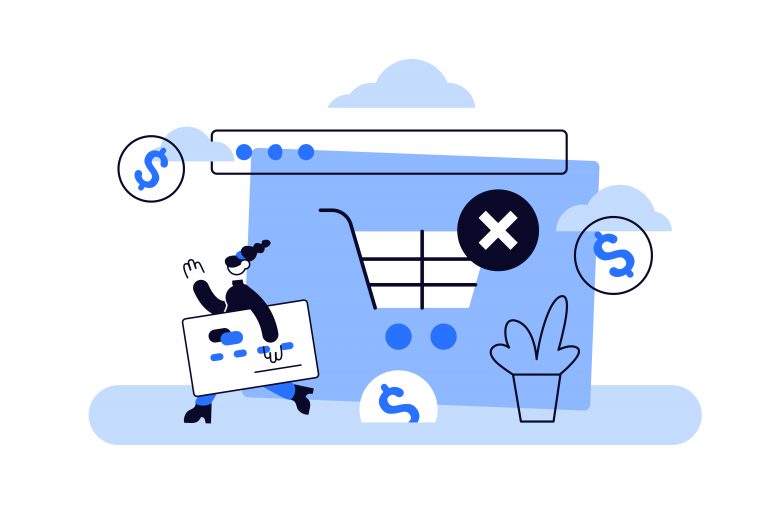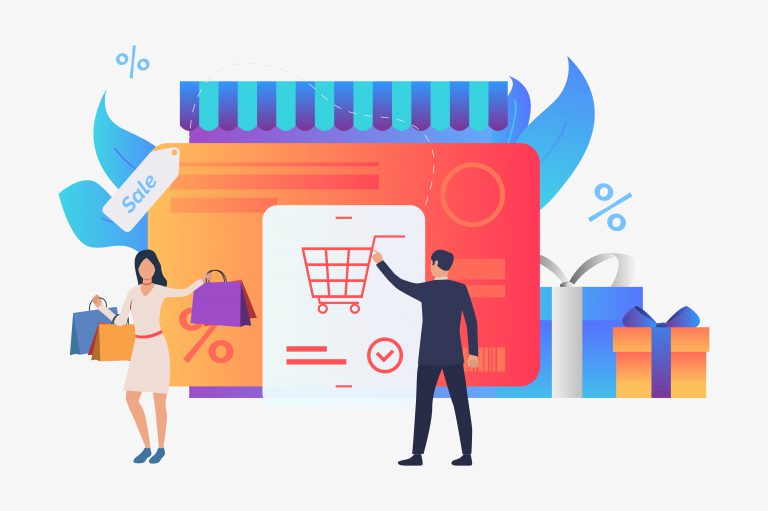There are over a billion e-commerce websites floating around the internet, meaning that those trying to get their products/services in front of the right audience can be difficult if not done correctly. Here are some ways in which your brand can increase eCommerce conversion rates.
Visual appeal
A website should be visually appealing as well as visually persuasive. Needless to say, the modern-day consumer seeks websites that offer aesthetically eye-catching themes, colors, and text that lure them in, such as:
As opposed to bland websites such as:
While it is obvious that the former example would be much more appealing to most retail consumers, let’s just say it has greater responsiveness and better user experience than the latter. Thus, visual persuasiveness and appeal is extremely vital to increase your eCommerce conversion rates.
Slow load speeds
If your website takes longer than three seconds to load, you’ve already lost about 53% of the interest from the traffic landing on it. Even the slightest delay can reduce conversions by 5-7% and cost you thousands in revenue. Think about it from a consumer’s perspective – you wouldn’t want to wait for a website to load, especially in today’s world of instant gratification. Rest assured that there are ways in which you can keep your website from becoming a leaky bucket of money.
Test the speed of your website – using Google Pagespeed can help to figure out the baseline speed of the website. Once it has been analyzed, what you’ll find is that the “heavier” it is, the slower the website becomes. The way in which you can improve the speed of your website can depend on the number of plugins on the website, website caching, image sizes, and so on. Be sure to check in with your developer to analyze where the website is dropping off.
Cart abandonment software
When sending out emails to your customers, what you’ll find is that a lot of your subscribers will either click the links, simply open the email, or won’t open/unsubscribe. To deter this from happening and to analyze what went wrong, it’s a good idea to check out cart abandonment software. Nobody likes an abandoned cart, which is why looking into the time it takes for account creation, extra costs behind the scenes, slow delivery times, and long checkout processes, are vital.
With abandoned cart technology, what you’ll find is that brands will have the ability to recover sales and reduce the number of bounces away from the checkout cart. The best type of software will include proper automation tools to keep from slowing down the checkout process and notifying customers (via pop-ups or emails) to checkout as soon as they can.
Implement upsells and downsells
Upselling is an excellent way to increase your conversion rate and nurture those customers that want to buy from you but are hesitant about value for money. Say you’re a retail eCommerce store that sellings accessories and a customer has landed on your website to purchase some products for an outfit. They click onto the jewelry and find a bracelet they love. However, you fail to add recommendations to the product pages and the customer is in a rush to purchase – you’ve missed out on an opportunity to upsell.
Now if you had added recommendations to the product pages and some earrings caught their attention, they could have added these to their cart and checked out before getting back to their day-to-day life. The lesson here is that customers do want to spend money, but it’s up to the brand to get them to spend more with suggestions. On the other hand, this concept also works when customers are wary of spending too much – adding inexpensive recommendations to the product page will then help customers to get value for their money. Although this won’t improve conversion rates, it will certainly keep them from leaving without making a purchase at all.
Provide different ways to pay
In the world of eCommerce, it is now commonplace for different ways to pay for things. It’s important for brands to establish which sort of methods work best for the target consumer and what they tend to use. Whether it’s PayPal, Klarna, or a simple debit card payment, brands should take into account that not all customers will want to pay straight away. Make conversion rates a mission and remember you do not want to miss out on sales because of a logistical issue with payments.
To wrap it up, it’s vital to recognize that all eCommerce websites are different as they will operate differently depending on industry, products, and services (as well as the target audience). That said, there is a multitude of reasons that conversion rates may not be high, and can be implemented in similar ways on all eCommerce platforms. Whilst these tips can help to get you to move in the right direction, it’s important to continuously look for ways in which you can improve the site (which also includes the clogs ticking in the backend). Take the time to fix issues and analyze your eCommerce website to create an exceptional conversion-generating experience.









.png?h=250&fm=webp)
.png?h=250&fm=webp)
.png?h=250&fm=webp)



.png?h=250&fm=webp)
.png?h=250&fm=webp)
.png?h=250&fm=webp)


.png?h=250&fm=webp)



.png?h=250&fm=webp)
















.png?h=250&fm=webp)

.png?h=250&fm=webp)
.png?h=250&fm=webp)



































































































































.png?h=250&fm=webp)


.jpg?h=250&fm=webp)





 copy.png?h=250&fm=webp)























_ Why do you need one.png?h=250&fm=webp)


























































.jpg?h=250&fm=webp)

.png?h=250&fm=webp)



.png?h=250&fm=webp)

.jpg?h=250&fm=webp)




.png?h=250&fm=webp)









.jpg?h=250&fm=webp)
